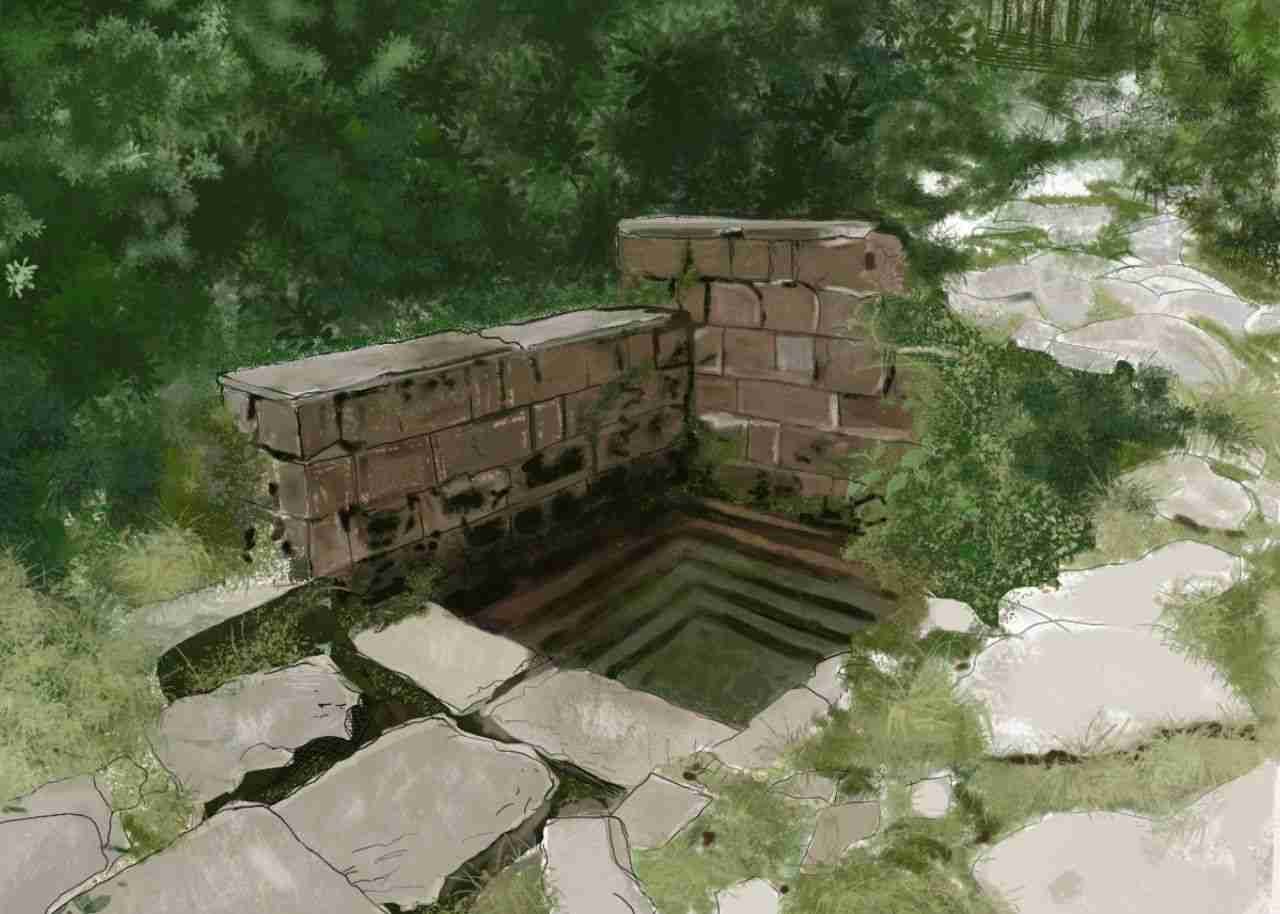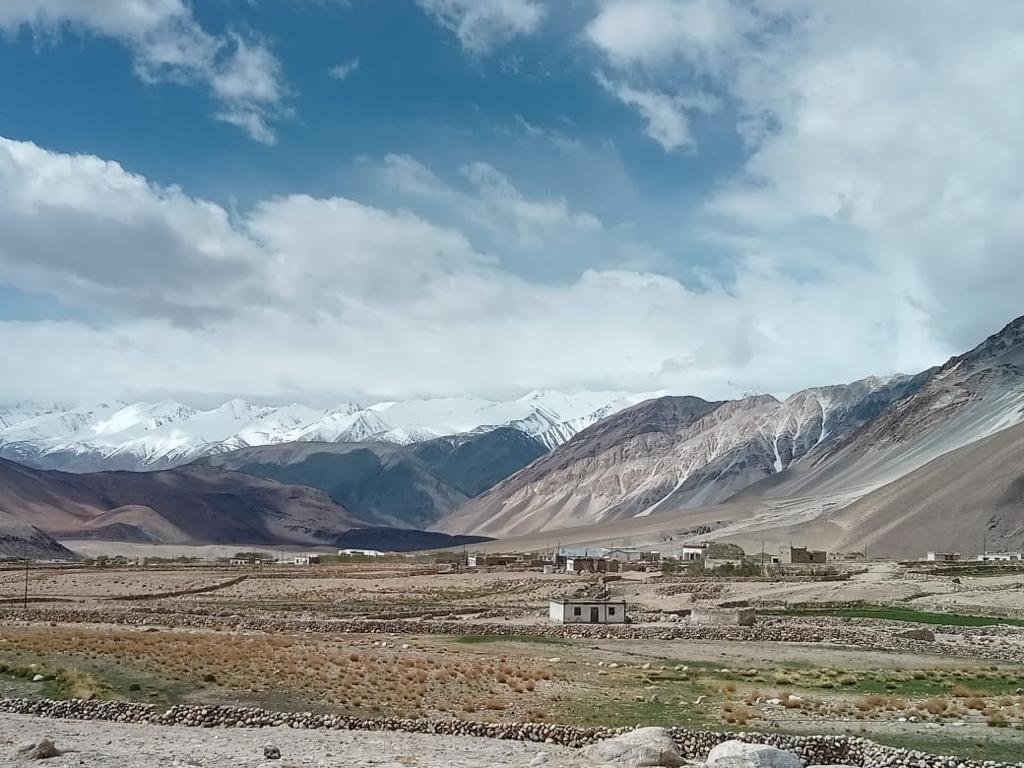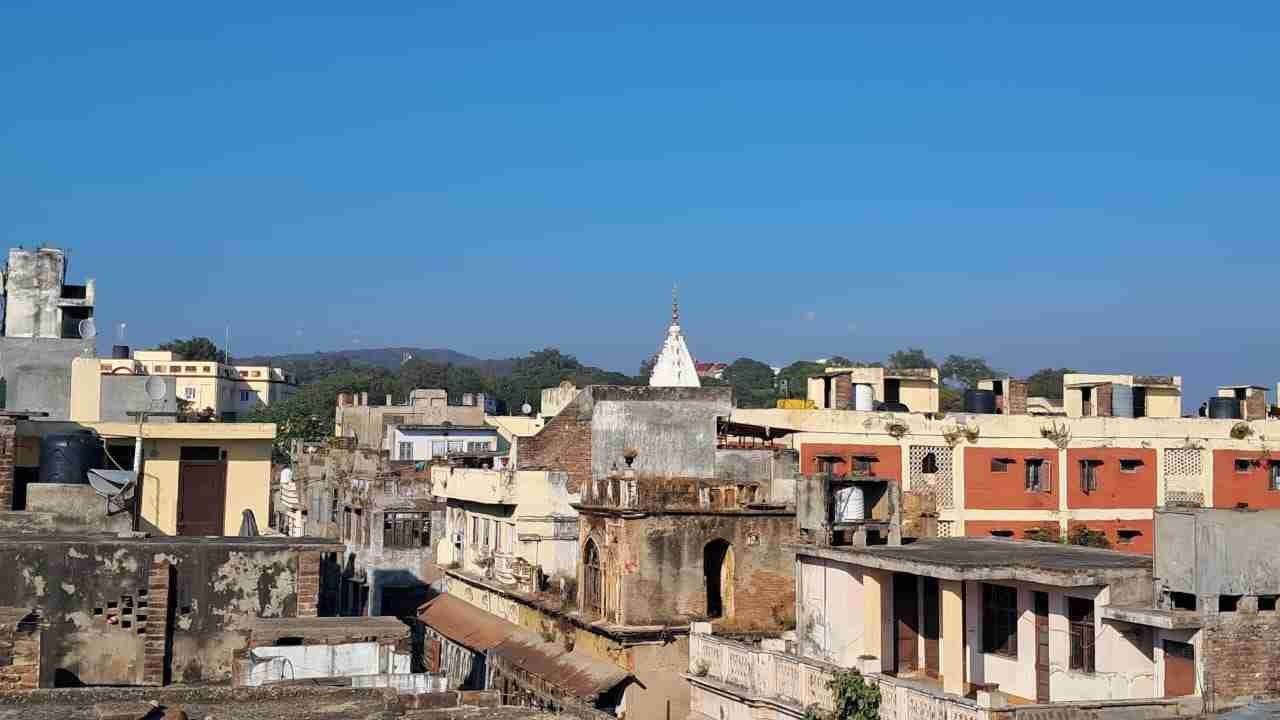I’m a Dogra – put simply I’m from a land geologically sandwiched between the fertile plains of Indus and the mighty ranges of the North western Himalayas. For thousands of years this midland ranging from 1,000-4,000 feet above sea level became home to many who escaped from the floods of the mighty Indus or the harshness of the high ranges.
How springs on Himalayan fault lines can teach you Dogra history
These forested, high water table regions with adundant grazing pastures, convenient for conduiting civilisational societies also became home to those escaping wars or those escaping the shame of loss in wars happening in the rest of the Indian subcontinent.
If you ever had any ancestral connection with the Dogra heartland like I have there are a few things that will define your cultural DNA – language, food and springs (called bowlis). And underlying these three are “rituals” that define this region’s civilisational pedigree.
The three complement each other in ways that only a native can understand. And yet today I aim to pick the “fresh water springs” for discussion because they are as significant to you and anyone in the world as they are to me.
The ones I aim to talk about are surface built structures lining the small and big mountain hike routes, they are votive, commemorative, some linked to clan specific life rituals and gods and are as numerous and significant in this part of the world as stupas are in the landscape of Ladakh. Yet they are unknown, undiscovered and very likely a case study of abused heritage.
There are thousands of varied sizes of them across the 26,089 square kilometers of the Dogra landmass that is boundaried by Pakistan in the West and South west, Kashmir in the north, Ladakh in the east and by Punjab and Himachal Pradesh in the south. I’m outlining geology and geography here because fresh water springs are a result of tectonic movements and are often at the Himalayan fault lines. Thousands of them signify something very important.
I’ve been watching this bowli for at least 35 years. It’s on the way to my ancestral farm. I have seen it changing – since about a decade a concrete bathroom has come near to it (extreme right, not visible in the reel). Video credit: Venus Upadhayaya.
Ironically, the himalayan tectonic plates don’t follow the political boundary lines that the British created between India and Pakistan or the conflicted border that rose because of subsequent wars. Himalayas are such a significant aspect of earth’s geological history that I believe these thousands of fresh water springs are extremely significant hydro-geological markers of human existence.
A few similar in glory to the great baths of Mohinjodaro, denote some ancient hydro-technological science waiting to be discovered and preserved.
They denote not only the sacredness subscribed to water in Dharmic (based on principles of Dharma and Karma) civilizations but also the sacredness subscribed to geology. They demand anthropological and historical identification and analysis. They demand hydro-geological investigation and research. They demand an architectural revitalization and preservation.
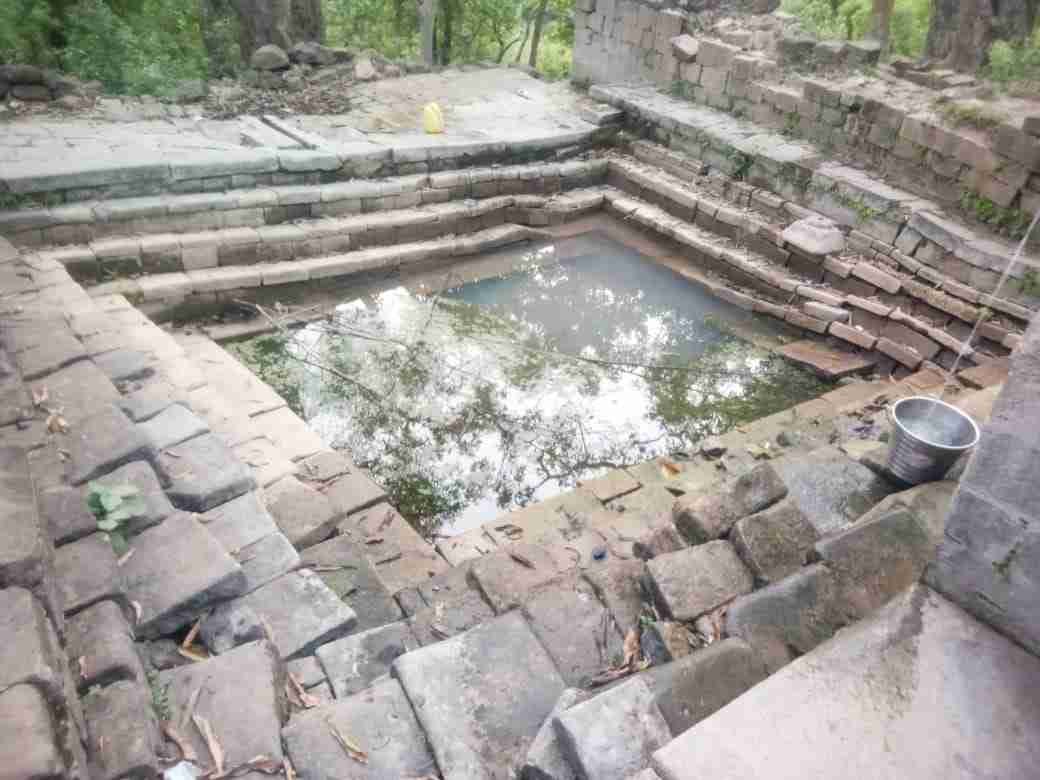
A public bowli in the town of Billawar. Photo credit: Venus Upadhayaya.
From whence they came?
There’s a trek to my village that was the only route to home before the road came up. During childhood when buses plying on the route were few, traveling to our ancestral home meant ceremoniously trekking on this route from the bus stop. During summers a trek in the afternoon meant passing by a Banyan tree under which an old widow would offer water to thirsty travelers. She did that as a service to the community and many times my parents stopped by just to chat and check how she was. I was in such awe of her vocation that she has become a cultural icon to me.
Everyday morning she would walk to the nearby spring (bowli) and fill her copper water pot (baldowi) and sit under the tree. While the bowli was her perennial source of water, her sense of service and her sense of purpose was her own!

A rough sketching of area transcribing natural spring (bowli) footprint as documented by Shiv Nirmohi in his book. Incidentally this coincides with the boundary of the dogra heartland. Photo credit: Venus Upadhayaya.
Uphill, my village had two ponds (they still exist) – yet decades ago when there was no tap water reaching home, aunts would walk instead to the bowlis downhill for fetching drinking water. I remember the women of the house teaming together for laundry at a bowli as if it was an excursion. Food would be packed and laundry at the bowlis would mean ample time to share secrets and lady-guffaws which were not possible in the joint family homes where faces remained under gungaat (veil) and conversations were in low tone in front of the elderly.
The Bowlis were classified. Community permission for washing laundry was not given at all bowlis. Some bowlis were almost as sacred as temples. Noted historian, Padam Shree Shiv Nirmohi has documented 241 such historical bowli locations in his book, Duggar Ki Bavliyaan. Yet it’s not an exhaustive list.
Some of these bowlis like the Bowlis of Gurnal are almost 1600 years old and were a part of an ancient urban architectural plan of a sacred city like Kashi, Ujjain or Rameshwaran which didn’t see completion. En route the ancient Kashmir to Haridwar route Gurnal had so many bowlis that locals still keep unearthing them. Some accounts say Gurnal which literally means an abode of gurus (teachers) on the bank of the river has 108 bowlis, some say they were 360. The whole site today under paddy cultivation is littered with historic remnants yet there has been no research or plans for preservation.
The biggest bowli in Gurnal is walled, amidst paddy fields and with fresh water streams constantly flowing around to the river. Narrow entrance is visible. Video credit: Venus Upadhayaya.
Nirmohi writes in his book that the oldest bowlis identified by Archeologist are in the east of the ancient temples of Babhor and these were unearthed in 1999. These temples are 1000 years old, so according to Nirmohi the architectural techniques of building bowlis had developed by 8-9th Century BC in the Dogra heartland.
A few centuries later mass migration of Hindus happened from the region of Rajasthan due to Islamic invasions and these people brought along with them the art of stone carving.
“When the migrated royals from Rajasthan established small fiefdoms in the region, they assigned the construction of bowlis to their stone workers,” wrote Nirmohi, adding that thus started a trend of Bowli construction in the Dogra heartland which is still alive in some or the other form. “The stone workers from Rajatshan were very fond of the camel from their place of origin. They gave the camel a place in the carvings found in the bowlis from this period.”
This could also explain why I saw camels in my village as a child. We were taught that camels are an animal of the desert and as a school goer I could never logically understand why they were in my village. However, of late I have neither sighted horses or camels in my village.

The walled bowli of Gurnal which according to Prof. Y. B. Singh is 1600 years old from the Gupta period. Photo credit: Venus Upadhayaya.
In another book “Duggar ka Ethihass” Nirmohi writes that in the bowlis of Badharwah the adundance of “Vedic words” indicate that the original inhabitants of the region were some Vedic community.
In Rajtarangini, the history of Kashmir by Kalhan, Badharwah is known as Badharwakash and in Vasukipuran it’s known as Bhadhrashram.
Types of bowlis
Nirmohi writes that based on the style of construction there are many types of bowlis found in this wider region: Koop Style of bowlis are all built between 18-20th Century–also called Rajasthani style, they share similarities to the Bavlis found in Rajasthan and Gujrat that have rooms on their lateral walls. The bowlis found on the old route to Mata Vaishnodevi shrine are all in this style.
Pahadi style of bowlis are also called “Nuon” and these are found in district Kathua, Doda and Kistwar and these bowlis have less stone ornamentation because the rocks found at this altitude are hard to work on. The water falls through a carved lion’s mouth in this style in many locations. The other two styles mentioned by Nirmohi are half-pahadi style and simple style. The half-pahadi style is found in the lower shivaliks and the plains. They also involve tree plantations called “Baani” around them. The simple style were projects taken up by the community collectively and in this style often there were separate bowlis for men and women.
A natural freshwater stream (kool in local language) near a bowli in Dungara village highlights the water rich topography. Video credit: Venus Upadhayaya.
Water is an integral part of the rituals in dharmic traditions and across India water bodies were considered sacred in classical cultures. Nirmohi mentions that it’s written in Padam Pooran that there’s no offering greater than the offering of water.
“Maybe that’s the reason that in Dogra heartland Maharajas, kings, knights, queens and even their retinue built bowlis and gained goodwill in their society. Even the business class of those days didn’t stay behind. They too devoted a part of their profits to building bowlis,” said Nirmohi.
The bowlis are linked with faith and religion in this part, maybe that’s why shrines devoted to gods and goddesses are found near these bowlis. Earlier the communities used to organise Yagyas and Havans near the bowlis. I know of one that a community organizes annually near my ancestral farm even today.
Nirmohi mentions that certain popular community fairs also happen along famous Bowlis. Around the three villages linked with my ancestors in Billawar tehsil I easily regularly pass by 5-7 such bowlis. I have heard of many others from my relatives who have them near the shrines devoted to their community gods.
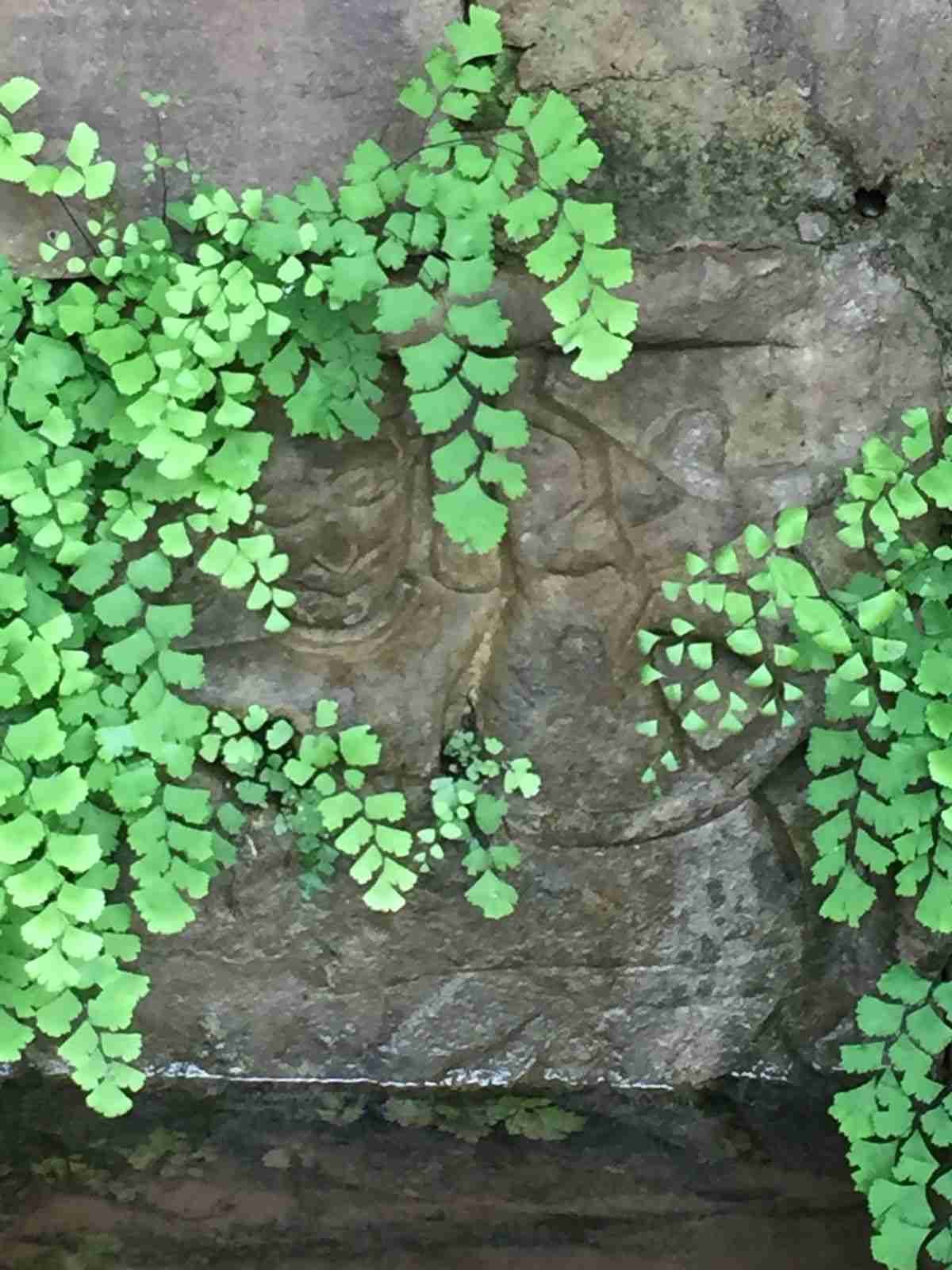
Carvings on the lateral walls of a bowli at a location in Rampur Rasool. From this specific location I can trace at least 200 years of my family history. Photo credit: Venus Upadhayaya.
What the geologists say
Today the bowlis are administered by the Soil and Water Conservation Department of the Jammu and Kashmir government and are increasingly being cemented; cement and brick bathrooms are being created near them for community purposes. Locals from a village in Kathua got in touch with me saying they want to do something about it, preserve them in their original form but they don’t know how.
To understand their significance in water and soil conservation I talked with Nitish Priyadarshi, an assistant professor of Geology in Ranchi University and a contributor to Observer Research Foundation, India’s leading think tank.
Priyadarshi is of the opinion that the bowlis are a “significant technology to preserve natural springs.”
“Springs are from the geological past. They are historical because they came up when the Himalayas were formed. They exist from the times before human civilization and they are controlled by tectonic movements. In today’s age of global water scarcity, they should be preserved on priority,” he said.
The Dogra heartland is a hilly area and the soil thickness is less with scattered plateaus and the surface springs are present at joints and fault lines, according to Priyadarshi.
He says springs play an important role in the hydrological cycle and numerous of them combine to form a river and this is most likely the case about the dogra heartland. Incidentally the site of Gurnal is present right on the bank of the stream Naj, a tributary of Ujh of the Indus basin system.
In bowlis of the dogra heartland the builders have protected the lower rock beds with slabs of stones on the top. These stone slabs are procured locally and the resulting structure is so durable that it has existed for centuries, according to Priyadarshi.
“The water is protected this way,” he said. The people who built them would have migrated from the “drought prone regions and understood the value of springs and that’s why preserved them this way.”
“They should be preserved for future human civilisation.”
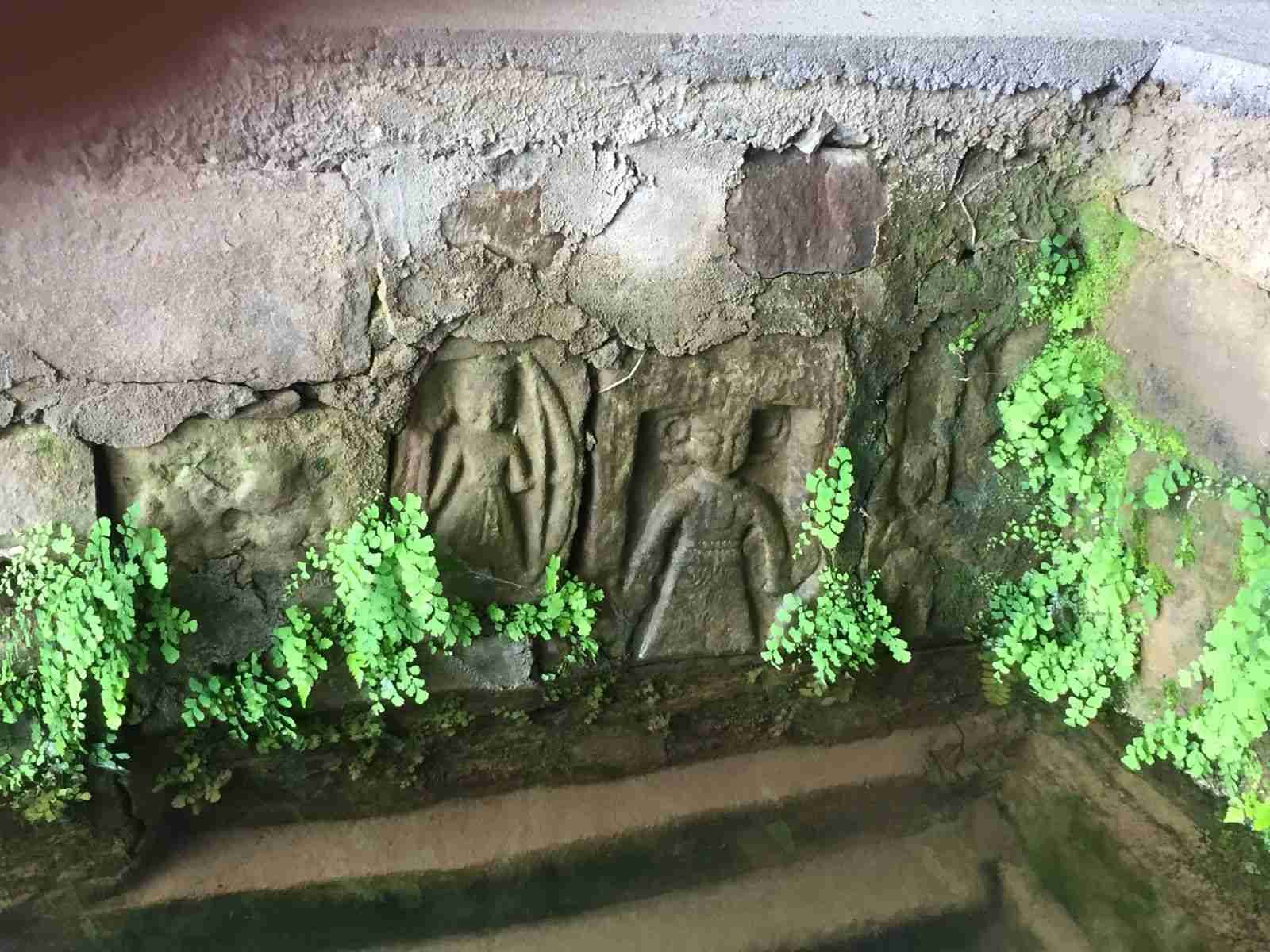
Another image of the engravings on the lateral walls of a bowli in Rampur Rasool. Historian and Prof. Mahendra Pathak estimates based on the iconography that this bowli could be 1500 years old from the Gupta period. Photo credit: Venus Upadhayaya.
My analysis
The Dogras were the people of the region where the lower shivalik ranges overlapped with the alluvial rich floodplains of the Indus basin system.
This region has always been convenient for conduiting civilizational societies because of its workable mountain passes and rich water resources. History here is all about who came from where under what circumstances and made this region their home and these people are today collectively called Dogras–the people of the midland.
The wider Dogra genealogy today can trace its history to migrations from across the Indian subcontinent–from the north, from the north west, as well as from the South and south east . Let’s go back to 1,000 years ago–according to Nirmohi that was the time when Gaznavi invaded Taxila (in Pakistan today) and the “Pal Vanshi” from there migrated to the region that’s today my ancestral region – Billawar that I talk about in my piece Kashmir to Haridwar.
Nirmohi is most likely talking about the Battle of Chaach and about King Anandapala who lost to Ganznavi in 1008 AD.
Do you think there would ever have been a time in the past thousands of years of civilization when the societies residing in these floodplains wouldn’t have the need to escape some or the other calamity or war. Where would they take shelter?
This context is important to fathom because I believe the bowlis and the other water bodies in this region are the historical footprints from different eras of all those who migrated to this land and established fiefdoms, temples and villages.
Water is such an integral part of human civilisation and such an indispensable aspect of dharmic traditions and rituals of life and death that water and hydro-technology can help us fathom much about our histories. For that matter by just tracing the footprint of bowlis across this land sandwiched between the Indus flood plains of what’s today’s Pakistan and the higher mountain ranges of North western Himalayas we can trace much about the Dogra history.
Dogra history should be owned by all Indians because it’s some or the other tail end of the history of migrations from across the Indian subcontinent. Dogras can’t be synonyms with the Dogra dynasty alone which ruled from 1846 to 1947 and the Bowlis can give you enough evidence.
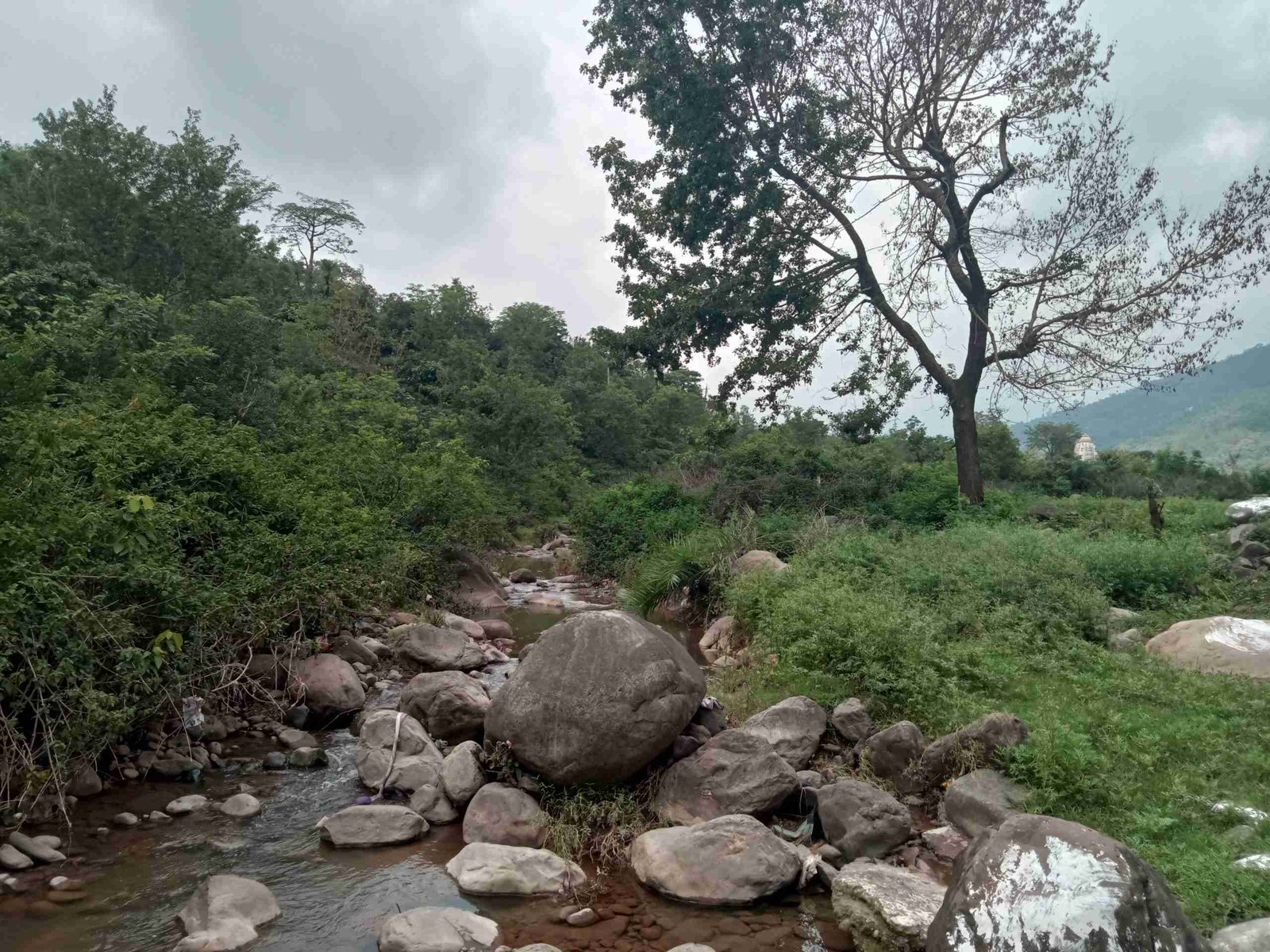
Trek to Gurnal. (Venus Upadhayaya)
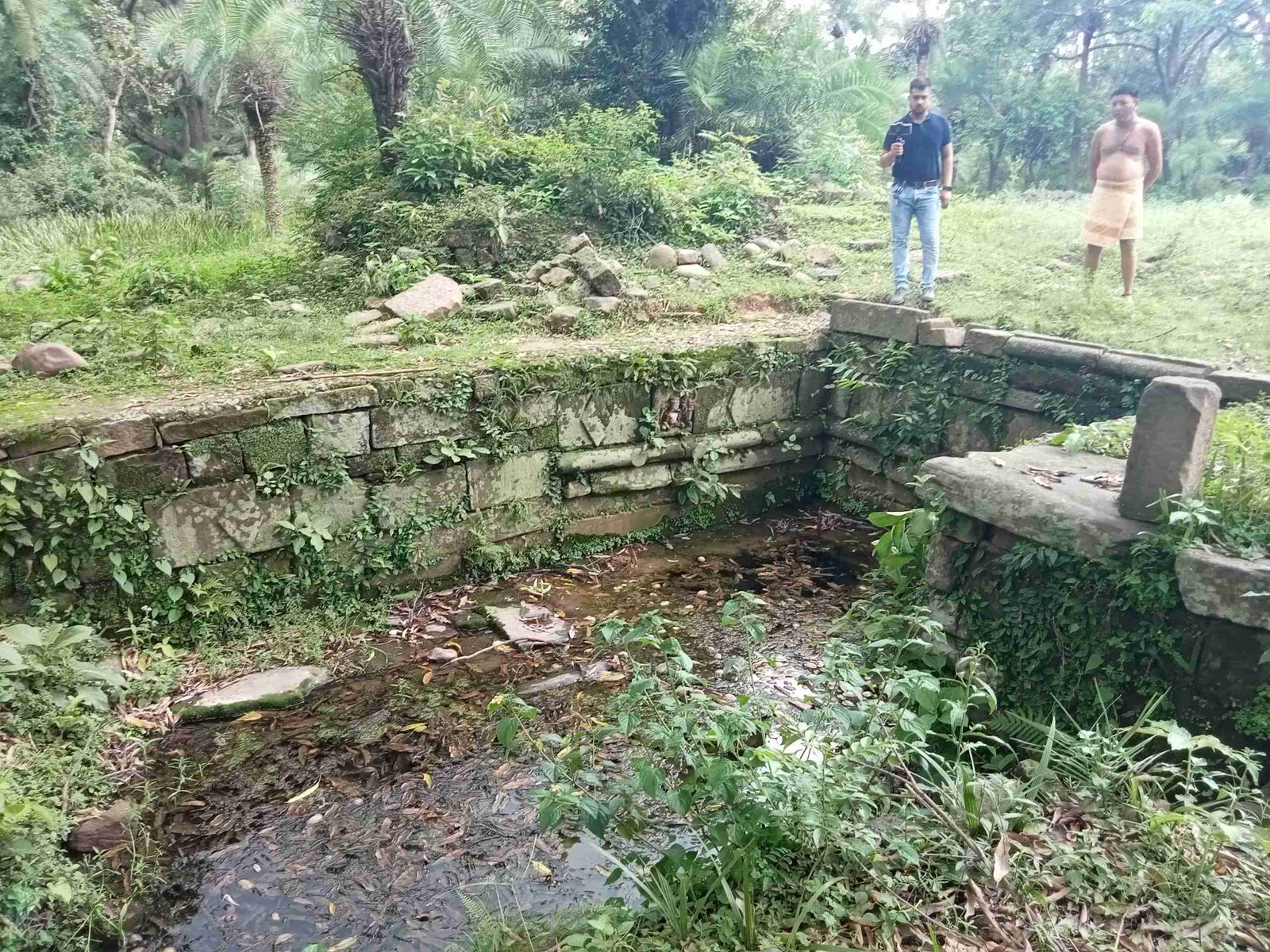
A big bowli in ruins at Gurnal. Photo credit: Venus Upadhayaya.

An old temple in Gurnal devoted to Shiva and built in Nagara style. It is seen freshly painted by locals here. The path of circumambulation is sunken about 2 feet from the visible ground level and is littered with ruins from the site. The temple is surrounded by the ruins of at least three big bowlis that are full of biowaste from the mango trees growing around. Wild date palm trees grow all around the site. Photo credit: Venus Upadhayaya.
Fourth in a Special Series titled “From Kashmir to Haridwar” based on family history, anecdotes, cultural linkages and ancestry by journalist Venus Upadhayaya. Read the other articles here.

